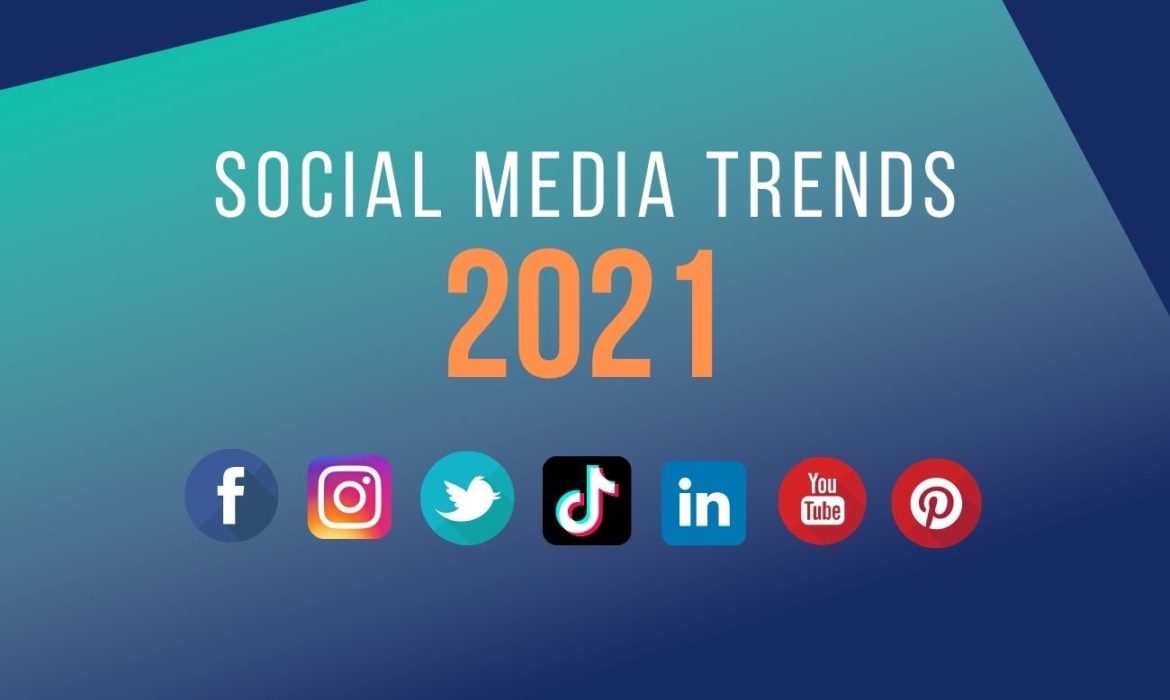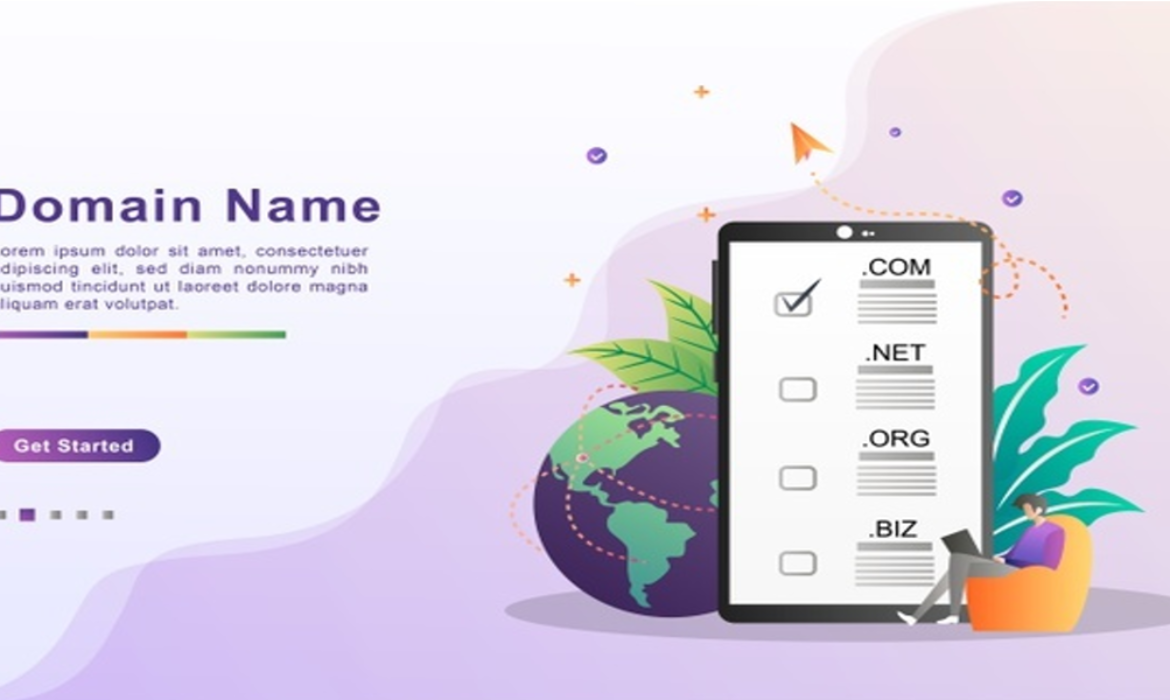Website Development Services Karachi Pakistan
Website Development Services in Karachi Pakistan
Are looking for a web design and development agency to build a smart online lead generation machine, you are at the right place. We offer best Website Development Services in Karachi Pakistan
At Softnologic, we build high performing marketing websites that can lift your business to the next level. Our web project managers and digital marketing strategists will work with you to create not just a great looking website but a site that will rank high in search engines and bring you the high quality leads that your sales team has been dreaming about.
We’ve been helping businesses grow and strive through creative web design and development effective internet marketing solutions since 2008.
Isn’t it time to revolutionize your web presence too?
We’re a Full Website Development Services Agency In Karachi Pakistan
Softnologic is a full service web design and development agency, providing website design and web development services to businesses in and around the world.
Our Favorite Web Content Management Systems

Enterprise Resource Planning
The Art of Management knows as ERP, Human Resource planning, CRM, Accounts, Marketing, Supports are the pillars of any ERP

For more details please contact us or call us +923012554680

Customer Relation Management
Most to of the Online Seller mostly skip the most important module, which is helps to improve online selling, know as CRM. Softnologic design and developed thousands and many CRM for our clients

For more details please contact us or call us +923012554680

E-Commerce Websites
Selling Online is an art and we know how to build a good secure E-Commerce websites which perform well.

For more details please contact us or call us +923012554680

Marketing Websites
Without Marketing Plans, any website is useless, Our Marketing expert plays vital role in boost your business

For more details please contact us or call us +923012554680

Custom Coding
Innovative Custom Solution or web application which meets your requirements

For more details please contact us or call us +923012554680
Our Proven Web Design & Development Process
Responsive Websites that Work on All Screen Sizes
Over half of all web traffic comes from mobile devices like smartphones and tablets. If your website doesn’t display properly on these smaller screens, visitors will leave your website and are highly unlikely to come back. If your site isn’t mobile-friendly, you’re likely missing out on a lot of sales!
A responsive website adjusts to screens of all sizes. Whether someone reaches your site on their phone or their extra large desktop monitor, it’ll look and function perfectly. This ensures you don’t lose traffic or leads because of a bad mobile experience.
Why Does Your Business Need a Thumb-Friendly Mobile Website?
Mobile web usage will continue to grow as more and more people use smartphones. Google the largest search engine in the world has also implemented mobile-first indexing. Where the mobile version of a website is used for primary consideration in ranking.
Best SEO Agency in Karachi

Best SEO Agency in Karachi
Karachi is the most biggest city and business financial hub of Pakistan, Most the the IT Experts, Entrepreneurs belongs to the city of Karachi. Lot of business activities done in every second here, Karachi Port is the another big expect to increase the business life of Karachi. You can find the Best SEO Agency in Karachi
If you are looking website developer to build state of the art technology you can hire web expert from the city of Karachi.
Every Digital business or website needs good SEO Optimization for better search engine performance, so you can hire softnologic as a team or partner to boost your business to the next level.
SEO Optimization
Website Design
Digital Marketing
Website Development and SEO Optimization
European and American Companies are looking Website developers from Pakistan and they preferred to hire Website developer and SEO expert from Karachi. Softnologic is the best SEO agency in Karachi and having big cliental of American and British companies.
You Are Welcome
You can contact us or call us +923012554680 for best seo optimization or develop a great looking website using any CMS like wordpress or magento

Digital transforming services we offer in different areas of Pakistan
Web development Service in Karachi.
Amazon AWS Infrastructure
E-Commerce Services in Pakistan
Website Optimization Service Your Website For Conversions
Website optimization service – You’ve invested in search engine optimization (SEO), and you’re starting to see more organic visitors to your website as a result of your efforts. While an increase in traffic to your website is certainly a positive development, it’s important to ensure that you’re driving the right kind of traffic to your site. Specifically, the kind of traffic that takes some kind of action on your site once they get there.
Oftentimes, companies become so wrapped up in optimizing their websites for search with the goal to drive as much traffic as possible to their site, that they forget about this very important next step: converting them into leads or sales. If your website’s visitors are not taking the next step in their journey and becoming a customer or a lead, then this traffic likely isn’t doing much to help your bottom line. This is where conversion optimization becomes a crucial part of the website success equation.
WHAT IS CONVERSION OPTIMIZATION?
One of the main goals for a website is to improve the business’s bottom line and generate leads and sales. Conversion optimization helps businesses achieve these goals by making it easy and simple for website visitors to become a customer or prospect.
A conversion can range from an online purchase of a product to downloading a guide or filling out a contact form. What counts as a conversion on your website will depend on your goals and the nature of your business.
TIPS FOR GENERATING MORE WEBSITE LEADS
In order to generate conversions, there has to be qualified traffic coming to your website. This can be accomplished using a variety of digital marketing tactics, such as digital advertising, social media, content marketing, and link building, to name a few. The more specific or intentional you are in your digital efforts, the more qualified the traffic coming to your site will be.
Any good web design and digital marketing agency understands the importance of generating conversions and will work to ensure that a website is designed to accomplish this goal. As such, there are numerous ways to optimize a website for conversion generation. Below are some tips that may help increase the number of qualified leads that your website delivers.
RESEARCH INTENT-BASED KEYWORDS
Examining the keywords and phrases that visitors type into search engines to access your site can provide a great deal of insight into what your customers are looking for, what problems they want solve, or what jobs they need to do. When developing a content or paid search strategy, these queries or keywords can help you better cater your website to meet the needs of your audience. When you can provide a solution that meets their needs, they will be more likely to take action than not.
To conduct keyword research, you can use a variety of tools like SEMrush, Moz, and Answer The Public to see how much search volume exists around different keywords. Additionally, Google Search Console can show you the exact queries that users are typing into Google when they access different pages of your site through search.
UNDERSTAND YOUR USER EXPERIENCE
When people visit your website, you don’t want them to find what they want (or worse, not find what they want) and leave. Rather, you want to keep your audience engaged on your site long enough that they become convinced to take the next step, whatever that may be. This process starts with understanding how users are engaging with your site.
Implementing heatmaps can show you how visitors navigate your site, whether they scroll down the page or click on your call to action (CTA). For example, if you have a “Request a Demo” button all the way at bottom of your page and users aren’t scrolling down that far, then moving it up toward the top of your page can be an easy way to try to increase your conversion rate.
CREATE TARGETED LANDING PAGES
Targeted landing pages are not only important in online advertising and SEO, but also in driving conversions on your website. Consider the product or service pages on your website. Do you have one big page that details all 10 of your services? Or, do you have 10 individual service pages that focuses specifically on that service alone?
With the latter, you are able to not only optimize for that specific keyword, but also increase your chances of converting someone who is specifically looking for that service. By saving them the time of having to dig through all nine other services you offer, targeted landing pages will help visitors find what they are looking for quickly and easily.
PROVIDE A HELP AND/OR FAQ SECTION
People like to know what they are getting before committing to a purchase or filling out a form. The fewer unknowns there are about you and your business, the more likely―and comfortably―a visitor can take the next step. It’s important to build trust and expertise early by providing them with the relevant information they need and answering their questions firsthand.
When creating your CTAs, make it clear what the user is getting. For example, if your CTA is to download a guide, be sure to explain what the guide is about. Additionally, creating an FAQ section on your site can help address any qualms a customer on the fence might have about making a purchase or taking the next step in your sales process. If customers don’t understand what your product is, how to use it, or what the benefits are, then they likely won’t feel comfortable making the investment.
USE A STRONG CALL-TO-ACTION
Make it easy and clear to visitors how and where to take action by including strong, well-written CTAs throughout your entire website. The CTA doesn’t have to be a hard sell like making a purchase either. A soft sell, such as obtaining a visitor’s email address by downloading a guide or subscribing to your newsletter, is still a huge win. Soft sells are low commitment ways to capture visitors’ information, so you can contact them in the future and nurture them throughout your sales process.
One bit of advice—be careful not to overwhelm your user with too many CTAs. It’s important to make it clear to the user what their next step should be. If you provide too many options at once, then they may get confused and not convert at all.
MAKE IT EASY FOR VISITORS TO CONVERT
website optimization service – The last thing you want is for someone to come to your site with the intention of contacting your company or making a purchase and not being able to figure out how to do so. Frustrated users can easily leave your website and go to a competitor if they can’t find what they need.
To ensure this doesn’t happen, make it easy for your visitors to convert. A few easy ways to accomplish this could be providing your phone number in the top navigation of the website or using contact forms on product or service pages (if not all pages).
NEVER BE SATISFIED AND DON’T STOP TESTING
Very rarely will you create the perfect website for driving conversions on the first attempt. It is imperative to never stop testing the changes you make to a website. Using multivariate or A/B testing will provide invaluable data into what is working and what is not. Consider free A/B testing programs like Google Optimize to test things like button copy, CTA placement, and more to ensure your site is optimized to get the most conversions.
USE YOUR DATA TO TRACK AND REFINE YOUR EFFORTS
website optimization service – From the very start of your optimization efforts (for search engines and conversions), it is essential that tracking is in place to measure results. Once enough data has been generated, you should use these metrics to shed light on adjustments that should be made to your site. Some metrics to pay attention to include:
- Bounce rate on a page
- Time spent on a page
- Rate of visitors exiting during the purchase process
This information will help you identity and improve the underperforming areas of your website.
DRIVE MORE CONVERSIONS ON YOUR WEBSITE –
Website Optimization Service
Your website is a sales tool for your company and should be treated as such. In order for a website to drive the highest level of leads and sales, it has to be optimized for the conversion process. The tips above provide a solid starting point for your optimization efforts. However, it is important to note that every website is unique, and results vary from case to case and industry to industry. Similar to SEO, conversion optimization is an ongoing strategy that takes effort, time, patience, testing, and data analysis.
Need some help? Contact us today to see how we can help build and optimize a website that goes beyond simply driving traffic and generates leads and sales to improve your bottom line.
Remember: even if the channel you’re considering is all the rage right now, it might not fit your brand. Always make informed decisions that directly relate to your company. Otherwise, your message won’t be delivered to its intended audience and you’ll have wasted time, effort and money. Website Optimization service in Karachi.
Social media changes the relationship between companies

Numbers don’t lie and the social media statistics definitely show that social media continues to change the way we do business. Social media is the most popular online activity, and 22 percent of time spent online is spent on Facebook, Twitter, and Pinterest. Two-thirds of Internet users regularly use social networks online, and within these social networks, consumers share or obtain information on products and services.
Businesses are responding to the overwhelming evidence and developing a stronger presence online. In fact, 91 percent of experienced social marketers see improved website traffic from social media campaigns.
The rise of social media is among the greatest changes to the business world in the 21st century. Social media demands attention because it has completely changed consumer behavior –a phenomenon that is still growing and changing as broader age groups start to utilize this tool.
People born between 1978 and 1994 are the first generation to be raised “on the internet.” This age group expects to have information at their fingertips and the freedom to control the information they consume. As a result, this group of consumers does not tolerate the traditional marketing tools of T.V. advertisements and cold calls in the evening. It is up to businesses to change and adapt their marketing strategy to cater to the consumer- a wise move since it is expected that this age group will be as large or larger than the baby boomer generation.
Businesses that see the power behind social media to speed their progress forward and embrace a new way of doing business, while those who resist the advances may find themselves dwindling into obscurity. The goals of businesses—to generate leads, develop healthy relationships, and define an identity—are still dependable goals. However, the method used to get there must change.
Progressive businesses that grasp the speed and scope at which this is happening are wise to use social media to their advantage. Social media allows businesses to build more meaningful relationships and get to know future consumers better. A business can build a fan base and receive feedback from their target audience. It can create new avenues of traffic that lead people to their products and solidify their identity to the consumer. The David Eccles School of Business realizes this shift in the way business is done, and makes it a priority to incorporate it into the curriculum to help students embrace their futures in the business world.
The Impact of Social Media on Business in 2021
Social media has had a huge impact on how businesses find and communicate with their audiences.
Prior to social media, businesses had to travel to live events to find a targeted group of prospects. Unfortunately, the average cost to attend even a small business conference comes in around $1,000, making it very difficult for startups to get in front of their target audience.
Social media has transformed that by:
- Allowing startups to get in front of a targeted group of people virtually
- Changing the way businesses communicate with their audience
- Replacing business cards (which often end up in the trash) by popping up in your audience’s feed
- Making it easy for businesses to provide value upfront prior to asking anything from a prospect
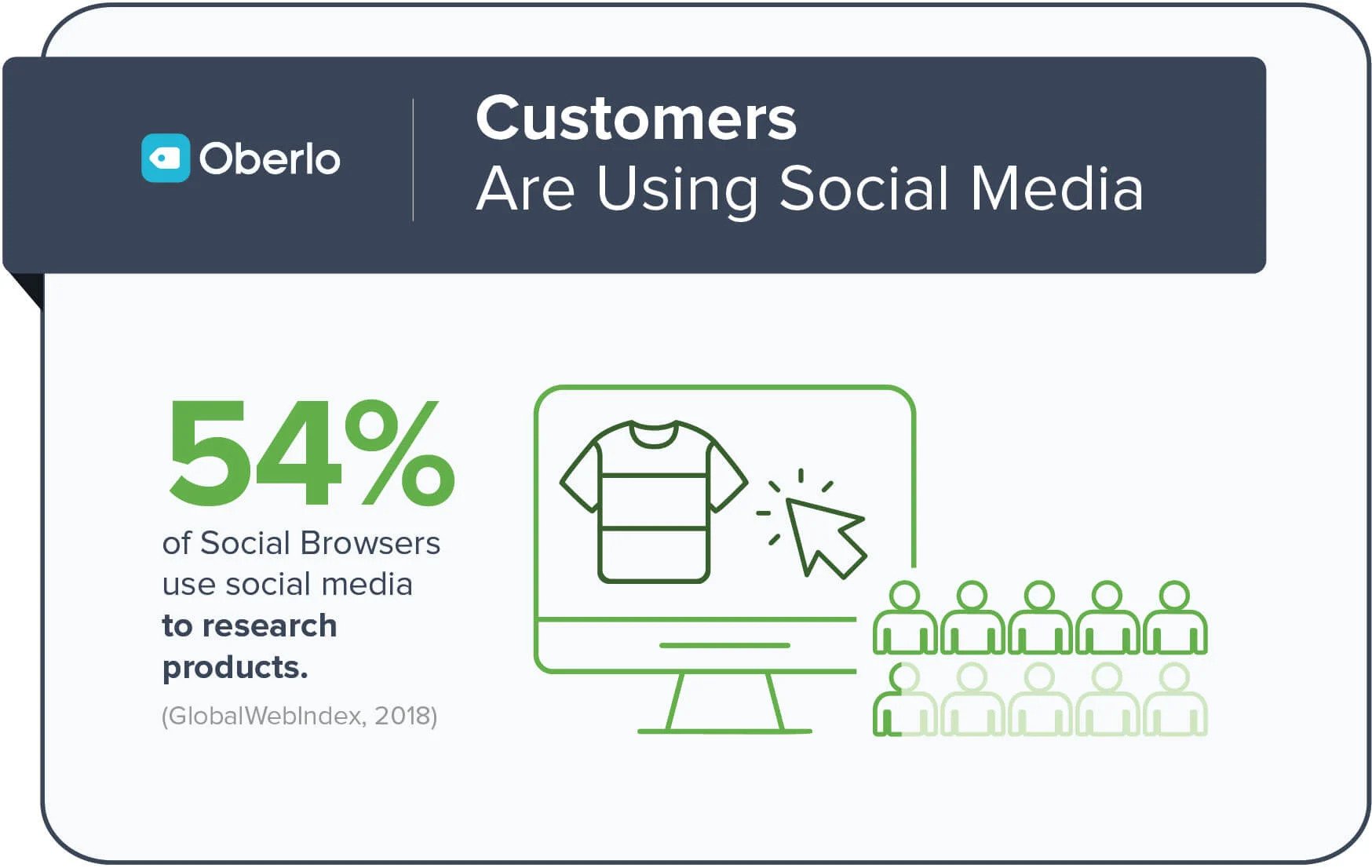
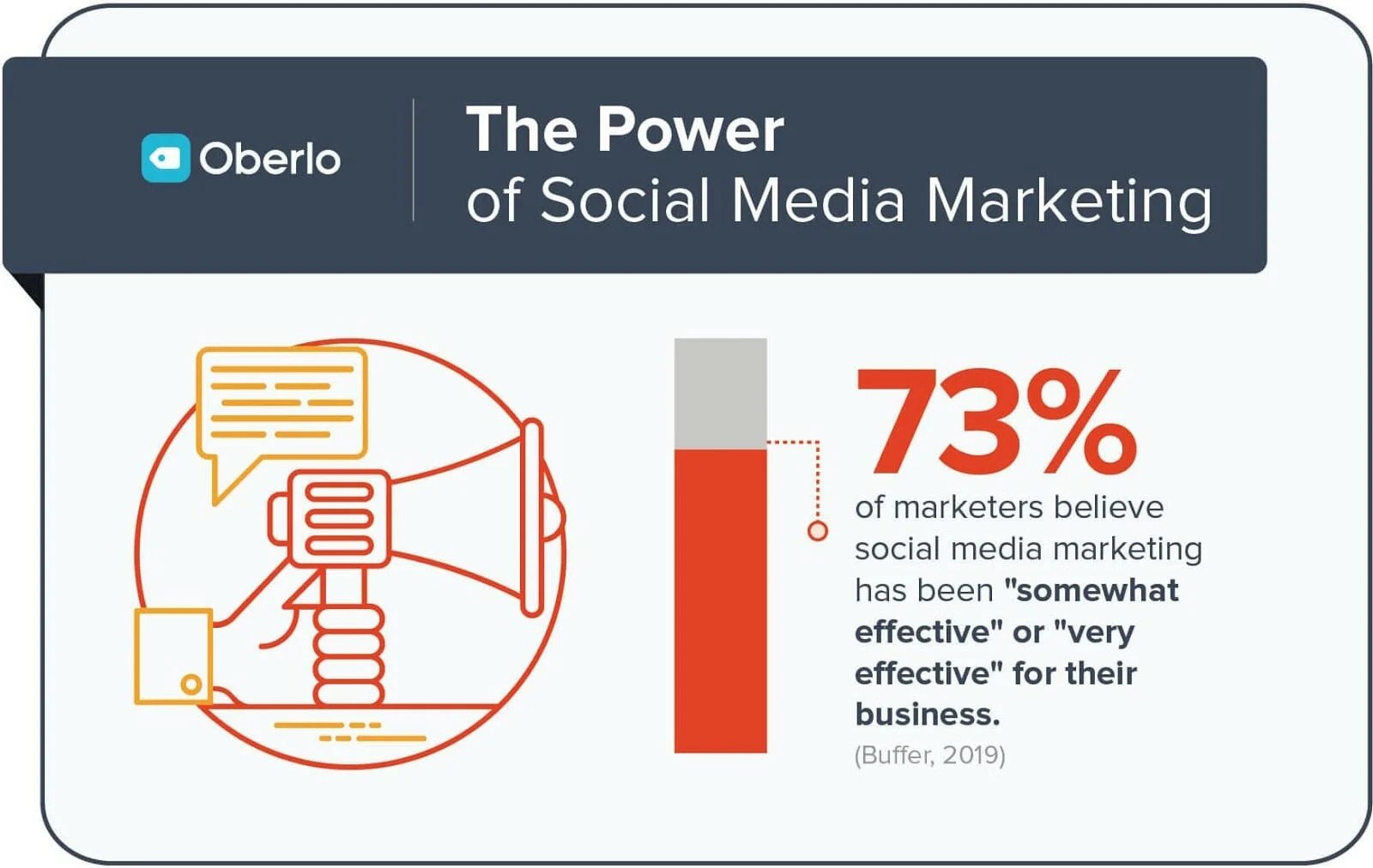
That said, social media doesn’t impact your business overnight. In fact, building a presence and seeing the ROI will likely take years. However, if you use social media correctly, it can build long-term relationships that will transcend any ads you might run.
8 Ways that Social Media Impacts Your Business
- Allows Businesses to Become Omni-Present
- Increases Personalization
- Generates More Loyalty
- Increases Industry Collaboration
- Adds Credibility
- Increases Referrals
- Helps You Build a Personal Brand
- Helps You Gauge Audience Feedback
- Where You Should Start
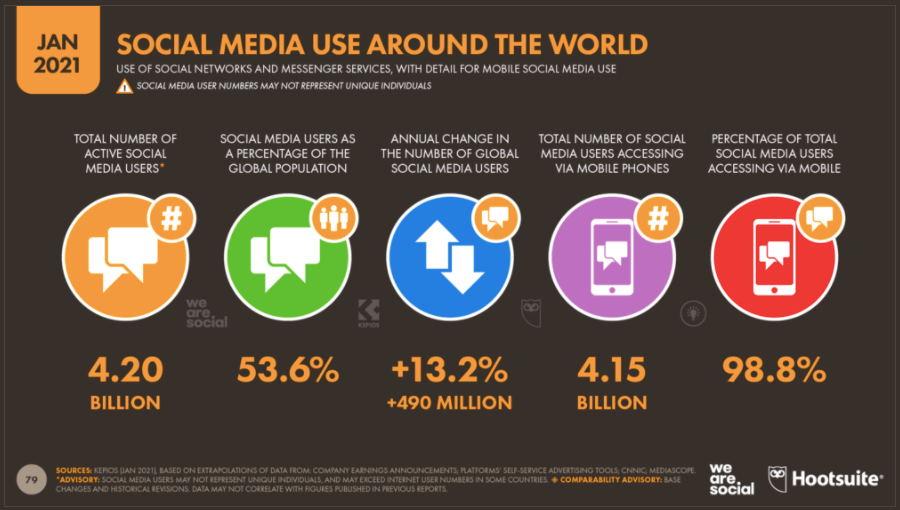
Social Media is Impacting Social Life
Natasha Malik
Best Domain Name Technique
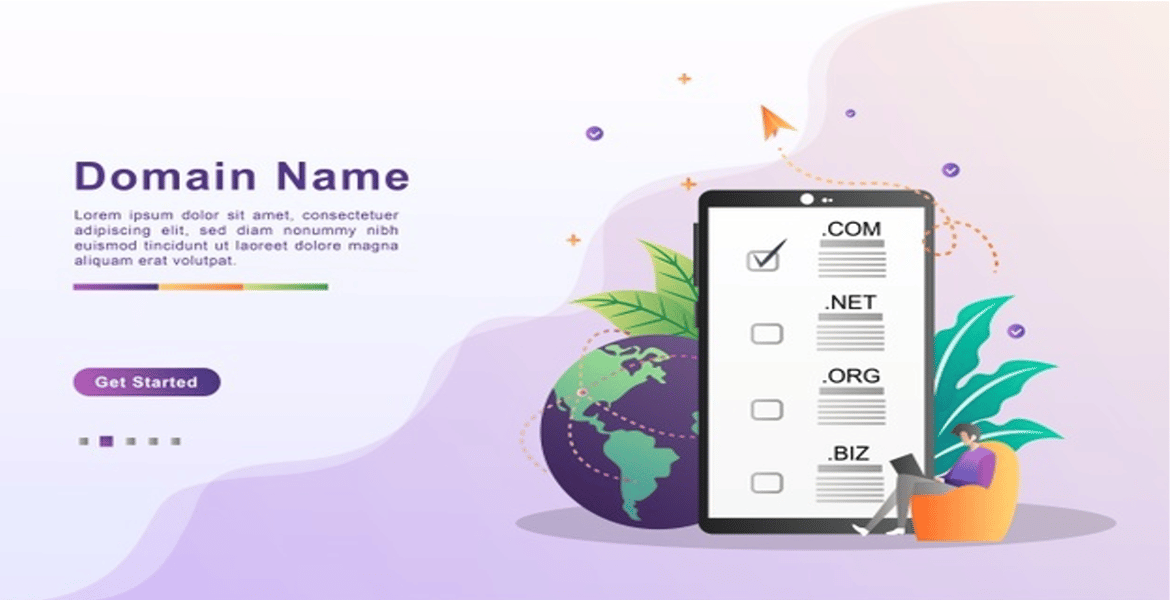
Choosing the right domain name for your website is crucial for your success. If you choose the wrong domain name, then it can be a hassle to switch later on without hurting your brand and search rankings.
That’s why it’s extremely important that you choose the best domain name from the start.
When first starting out, it can be hard to come up with catchy business name ideas with a perfect domain name.
In this article, we’ll share all the tools and tips you need to get domain name ideas, choose the best domain name, and register your new domain (for free).
14 Tips for Choosing the Best Domain Name
When starting a blog, choosing a domain name can be stressful because you don’t want to make a mistake.
To make the process easier, we have a simple 14 step framework that you can use to pick the best domain for your website.
- Stick with .com
- Use keywords in your domain name search
- Keep your domain name short
- Make it easy to pronounce and spell
- Keep it unique and brandable
- Avoid hyphens in domain name
- Avoid doubled letters
- Leave room to expand
- Research your domain name
- Use domain generators for clever ideas
- Act quickly before someone else takes it
- Best place to register a domain name
- Get free domain with web hosting
- Most popular domain registrars
Let’s take a look at these tips one by one with more details.
1. Stick with .com
There are plenty of new domain name extensions available today, from the original .com, .net and .org to niche extensions like .pizza, .photography, and even .blog.
We always recommend choosing a .com domain name.
While it can be tempting to come up with clever blog names using new extensions, .com is still the most established and credible domain name extension.
In our opinion, newer domain extensions like .ninja, .photography, and others can make your business appear less trustworthy.
Dot-com domains are the most memorable. Many users, especially those who aren’t as tech-savvy, will automatically type “.com” at the end of every domain without thinking about it.
If your website is something like jane.photography, and your users accidentally type in jane.photography.com, they will end up on an error page on photography.com website.
It’s smart to avoid that risk by sticking with .com.
Not to mention, most smartphone keyboards automatically have a .com button.
2. Use Keywords in Your Domain Name Search
Keywords play an important role in a domain. By using keywords in your domain name, you tell the search engines what your website is about. Together with quality content and good user experience, keywords in your domain can help you rank higher in Google.
It is very hard to find a good domain with your target keywords, that’s not already taken.
You will need to be creative and combine your keywords with other words to make your domain stand out.
3. Keep Your Domain Name Short
While keywords are important, don’t go overboard with domain length. It’s better to have a domain name that’s short and memorable.
We recommend keeping your domain name under 15 characters. Longer domains are harder for your users to remember.
Not to mention, users will also be more prone to entering typos with longer domain names which can lead to loss traffic.
That’s why it’s a good idea to keep your domain length short.
4. Make Your Domain Name Easy to Pronounce and Spell
You should be able to easily share your domain name when speaking as well as writing. You never know when you’ll be asked to share your domain name in person.
If you’re planning to use your domain name to create a professional business email address, then it definitely should be easy to understand and spell for any listener.
5. Keep it Unique and Brandable
Your blog domain name must be unique, so you can stand out in your readers’ minds. It’s smart to research other blogs in your niche and find out what domain names they’re using.
You don’t want to accidentally use a trademark name or get accused of copying another blogger.
You can also choose to pick a domain name that’s more brandable.
Brandable domain names are unique, catchy, and memorable. For example, “Amazon.com” is a much more brandable name than “BuyBooksOnline.com.”
6. Avoid Hyphens in Domain Name
Never create a domain name with hyphens. Hyphens can be a sign of spam domains which you do not want to be associated with.
Hyphenated domains are also prone to typos. If you choose a domain name with hyphens because the domain you want is already taken, then your users will likely end up at your competitor’s site if they forget to type in the hyphen.
7. Avoid Double Letters
It’s a good idea to avoid domains with doubled letters, because it increases your chances of losing traffic to typos. For example, a domain like Presssetup.com will be more prone to typos, and result in lost traffic.
Avoiding doubled letters will also make your domain easy to type and more brandable.
8. Leave Room to Expand
It’s smart to choose a domain name that’s related to your industry / niche because it gives users some idea of what your website is about. But you also don’t want to limit your long term options too much.
For example, a florist might choose a domain name like orchidblog.com, but then they may want to start blogging about other flowers beside orchids. In that case, the domain might prevent you from attracting readers interested in other flowers.
Properly moving your site to a new domain can be a frustrating process, and it can cause you to lose search rankings if you don’t do it right. That’s why it is important to pick a flexible domain name from the start.
9. Research Your Domain Name
Before you register a domain name, try to find out if there is already a registered business using the same name.
You can perform a trademark search to see if there is already a similar or exact name already trademarked.
You can also perform a Google search and check for the name’s availability on top social media websites like Twitter, Facebook, Instagram, etc.
A similar or matching name would not only cause confusion, but it could also have severe legal implications which may cost you a lot of money.
Once you have your own website up and running, you can learn more about how to trademark and copyright your website name and logo.
10. Use Domain Name Generators for Clever Ideas
Currently, there are more than 360 Million registered domain names. This leads to many people saying that all good domains are already taken.
Searching for individual domain name manually can be very time consuming.
This is where domain name generators come in. These free tools automatically search for your defined keywords to find hundreds of clever domain name ideas.
We recommend using Nameboy, which is one of the oldest and most popular domain name generator tool online.
You can also use WPBeginner’s free Business Name Generator tool, or IsItWP’s domain generator to find more domain name ideas.
11. Act Quickly Before Someone Else Takes it
Each day thousands of new domain names are registered from all parts of the world. If you have found a domain name that you like, then don’t wait too long.
Domain names are like real estate. Thousands of people are actively looking for good brandable domain names that they can register for better rates in the future.
If you don’t act fast, then someone may go ahead and register your domain idea.
Since domain names are relatively cheap, we always recommend our readers to act fast. If you change your mind later, then you can simply let it expire.
Best Places to Buy a Domain Name
There are hundreds of domain registrars on the web. It’s important to choose carefully because it can be difficult to move your domain later on.
Just like with web hosting, pricing for domain registrations can vary anywhere from $9 to $24. You can even get it for free*.
Let’s take a look at how you can easily buy a domain name.
Free Domain Registration with Web Hosting
Majority of web hosting companies also offer domain registration as a service. Some of those companies offer free domain registration with new hosting accounts.
If you’re starting a new website, then it’s a smart idea to take advantage of this offer and get your domain name for free.
Below are the two WordPress hosting companies that are offering our users over 60% off web hosting, free SSL certificate, and a free domain name:
Bluehost is one of the oldest and largest brand name when it comes to web hosting. They’re an official “WordPress” recommended hosting provider.
HostGator is another popular web hosting provider that’s offering a free domain name with very affordable website hosting options.
It’s important to keep in mind that most hosts offer free domain registrations for 1 year only. After the first year, your domain registration will renew at usually around $14 per year.
A lot of users take advantage of the free domain for the first year because you would have to pay for the domain name regardless, why not get it for free.
Most Popular Domain Registrars
If you just want to register a domain name without purchasing hosting, then you can do that by purchasing it from a domain name registrar.
Domain.com is one of the best domain registrars on the market. They offer all top-level domain names, with a smart search feature, premium domains, and all the necessary tools to manage your domain names.
Domain.com is offering WPBeginner readers a 25% discount, and our domain.com coupon should be automatically applied on your purchase.
Network solutions is another popular domain registrar with over 7 million domains registered.
They’re offering our users 25% off discount with Network Solutions coupon code: WPBEGINNER.
GoDaddy is the largest domain registrar in the world. They manage over 63 million domain names for over 14 million customers.
They also offer web hosting plans as well. If you use our GoDaddy coupon code, then you can get a free domain name.
Related: 7 Best GoDaddy alternatives that are cheaper and more reliable.
Final Thoughts
If you are starting a blog for the first time, then you may find our ultimate guide on how to start a WordPress blog helpful because it walks you through everything step by step.
You may also want to check out our WordPress and Blogging Coupons page to find the best deal on other web tools and services.
For more domain name ideas, you can see our post on the 14 best free domain name generators or just use the WPBeginner’s AI powered business name generator that also checks domain name availability.
That’s all. We hope this article helped you understand how to choose a perfect domain name for your blog or business.
If you liked this article, then please subscribe to our YouTube Channel for WordPress video tutorials. You can also find us on Twitter and Facebook.
Remember: even if the channel you’re considering is all the rage right now, it might not fit your brand. Always make informed decisions that directly relate to your company. Otherwise, your message won’t be delivered to its intended audience and you’ll have wasted time, effort and money.
New Spam Algorithm Update by Google Rolls Out
Google confirms rollout of a spam-related algorithm update on June 23, 2021
Google’s Danny Sullivan confirms an algorithm update targeted at fighting spam is rolling out to search results.
The rollout of the update will conclude today, June 23, 2021. A second spam update will follow next week.
Exact details were not provided about this specific update. Though Google regularly rolls out spam updates to maintain the quality of its search results.
It’s unlikely a legitimate website following Google’s webmaster guidelines have anything to worry about with respect to these spam updates.
Google has a strict definition of what it considers spam, and it primarily includes low quality sites that trick users into providing personal information or installing malware.
Spam updates also target phishing scams, and other bad actors on the web that try to rank in search results by posing as highly relevant pages.
With that said, even sites that follow Google’s guidelines are vulnerable to hacked spam. If a site is not adequately secured it could be serving spam to users without knowing it.
Google’s annual spam fighting report indicates that hacked spam is rampant. If your site suddenly drops in rankings following today’s update or the one next week, it would be wise to examine your site’s security and look for signs of a possible attack.
When a site is hit by a spam update its content is either demoted in search results or removed from Google’s index.
The company estimates that its automated systems keep more than 99% of visits from search results spam-free.
In announcing this update, Sullivan links to a blog post from April which details the results of Google’s recent spam fighting efforts.
Last year Google’s automated systems blocked 25 billion spammy pages from being indexed in search results every day.
We’ll likely learn more about the impact of the June 2021 spam updates when Google publishes its annual spam fighting report next year.
4 New Ecommerce Features Launches by Facebook
Facebook is introducing new ways for online retailers to get their products discovered by more customers and increase sales.
Facebook, Instagram, and WhatsApp are gaining new features that will help retailers get their products in front of more customers and drive sales.
Customers increasingly turn to Facebook as a discovery engine to find new products.
The company reports that 74% of people use Facebook platforms to discover brands or products online.
Certain categories of retail perform better than others. Over 85% of people surveyed purchased a fashion, beauty, furniture or electronic product they first discovered on a Facebook platform.
Now there’s new ways for customers to discover and purchase products, which means more opportunities for retailers to sell.
Today’s updates include:
- Bringing shops to more places
- Customer reviews on Instagram
- Ads for Shops
- Expanded use of AR
Here are the complete details.
Facebook Shops in More Places
Once a Facebook Shop is set up, products are eligible to appear in the Shop tabs on Instagram and Facebook.
Over one billion people use Marketplace each month, so Facebook is making it easy for businesses to bring their shops into Marketplace to reach even more people.
Businesses in the US can now choose Marketplace as an additional sales channel.
In addition, businesses in several countries can showcase their entire Shop in WhatsApp.
WhatsApp users can browse a Shop’s inventory, get product information, and chat about specific items before making a purchase.
Businesses only need to set up their shop once to have it work across Facebook, Instagram, and WhatsApp.


Customer Reviews
Over the next few months customer ratings and reviews will be expanded to products in Shops on Instagram.
When this feature rolls out it will include photos and videos from the community in addition to written reviews.
Facebook says in an announcement:
“We always want shoppers to feel confident in the purchases they make, so we’re giving people more information before they buy…
These changes will help people make more informed decisions on what to buy, and will let businesses know if they are meeting customer expectations.”
Personalized Shop Ads
Facebook is launching new ads to personalize the shopping experience and point customers toward a Shop’s curated collection.
Shop ads will have the ability to send shoppers to where they are most likely to make a purchase based on prior shopping activity.
In the future, Facebook will add ways to help businesses further personalize their ads by providing special offers or promotions to select customers.

Expanded Access to AR Try-On Feature
Augmented Reality (AR) brings the “magic” of the in-store shopping experience to mobile, Facebook says, and more brands can now let customers try on products virtually.
Facebook is developing new APIs that will make it easier, faster and more cost-effective for brands and advertisers to bring AR into their catalogs.
This is rolling out first to brands in the beauty category, with support coming to other verticals in the near future.
Lastly, Facebook is bringing AR to a new ad unit that will automatically show relevant products to people based on their interests, encouraging them to “try it on.”
Testing of AR-based ads is underway and will be available to more brands by the end of the year.

Facebook, WhatsApp and Instagram making life easier and better.
Javvad Ali Qureshi
After Covid-19 world thinking approach is entirely changed. Stay Home Say Safe
Google Cloud vs Amazon Web Services 2021

Google Cloud vs Amazon Web Services 2021: Features, Pricing, Pros & Cons
Selecting both primary and secondary cloud services is now a common IT strategy for most enterprises. Recent research shows that about 90 percent of enterprises and non-profit organizations are utilizing multiple cloud services accounts. This is a big change over what was happening a mere several years ago, when some companies were still reluctant to trust their business data in any cloud application. Today we offer a Google Cloud Platform vs. Amazon Web Services comparison.
Public cloud service providers such as Amazon Web Services, Microsoft Azure, Google, IBM, Dell EMC, Salesforce, Oracle and others are making it easier all the time for customers to come and go or add or subtract computing capacity or apps as needed. These and other providers also keep coming up with new and more efficient services for companies to use, many of which now feature artificial intelligence options to make them more usable for technical and non-technical employees alike.
In this article, we take a close look at two of the three largest cloud services providers in the world: Amazon Web Services and Google Cloud Platform. eWEEK uses research from several different sources, including individual analysts, TechnologyAdvice, Gartner, ITC, Capterra, IT Central Station, G2 and others.
What we’ll do here is compare at a high level and in a few different ways these two global cloud storage and computing services, so as to help you decide on the one that suits your company as the most cost- and feature-efficient one available.
AWS vs. Google Cloud: Key similarities and differences
To use an AWS service, users must sign up for an AWS account. After they have completed this process, they can launch any service under their account within Amazon’s stated limits, and these services are billed to their specific account. If needed, users can create billing accounts and then create sub-accounts that roll up to them. In this way, organizations can emulate a standard organizational billing structure.
Similarly, GCP requires users to set up a Google account to use its services. However, GCP organizes service usage by project rather than by account. In this model, users can create multiple, wholly separate projects under the same account. In an organizational setting, this model can be advantageous, allowing users to create project spaces for separate divisions or groups within a company. This model can also be useful for testing purposes: once a user is done with a project, he or she can delete the project, and all of the resources created by that project also will be deleted.
AWS and GCP both have default soft limits on their services for new accounts. These soft limits are not tied to technical limitations for a given service; instead, they are in place to help prevent fraudulent accounts from using excessive resources, and to limit risk for new users, keeping them from spending more than intended as they explore the platform. If you find that your application has outgrown these limits, AWS and GCP provide straightforward ways to get in touch with the appropriate internal teams to raise the limits on their services.
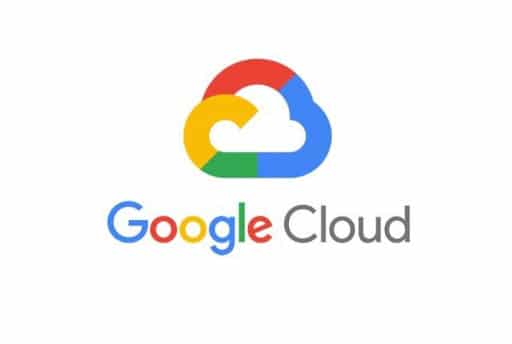
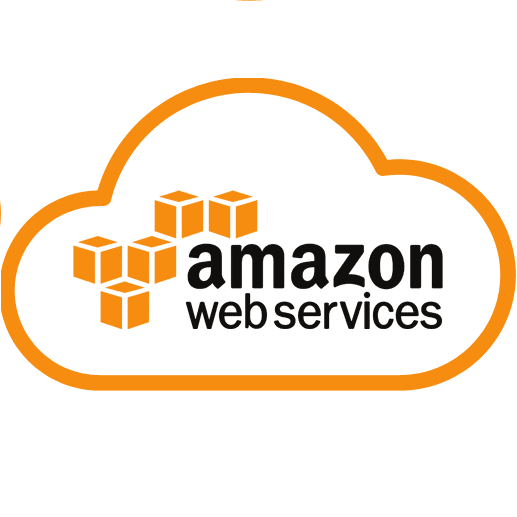
Resource management interfaces
AWS and GCP each provide a command-line interface (CLI) for interacting with the services and resources. AWS provides the Amazon CLI, and GCP provides the Cloud SDK. Each is a unified CLI for all services, and each is cross-platform, with binaries available for Windows, Linux, and macOS. In addition, in GCP, you can use the Cloud SDK in your web browser by using Google Cloud Shell.
AWS and GCP also provide web-based consoles. Each console allows users to create, manage, and monitor their resources. The console for GCP is located at https://console.cloud.google.com/.
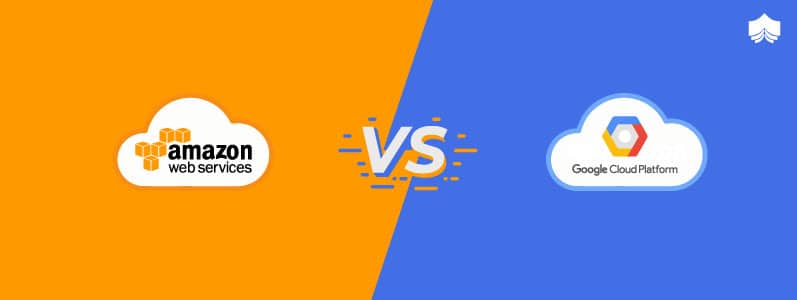
What is Google Cloud Platform?
For the past 15 years, Google has been building one of the fastest, most powerful, and highest-quality cloud infrastructures on the planet. Internally, Google itself uses this infrastructure for several high-traffic and global-scale services, including Gmail, Maps, YouTube and Search. Because of the size and scale of these services, Google has put a lot of work into optimizing its infrastructure and creating a suite of tools and services to manage it effectively. GCP puts this infrastructure and these management resources at users’ fingertips.
Google Cloud new features for 2021
- In July 2020, Google Cloud introduced Big Query Omni, a new multi-cloud analytics solution, powered by its hybrid and multi-cloud Anthos platform, that allows users to run the same database in multiple cloud and data center environments. The new package extends Google Cloud’s analytics platform to other public clouds without leaving the BigQuery user interface and without having to move or copy datasets. It’s available in private alpha for Amazon Web Services’ Amazon Simple Storage Service (S3), and support for Microsoft Azure is coming soon.
- Also in July 2020, Google Cloud unveiled the first product of its confidential computing portfolio: new Confidential VMs that allow users to run workloads in Google Cloud while ensuring their data is encrypted while it’s in use and being processed, not just at rest and in transit. The solution, available in beta for Google Compute Engine, helps remove cloud adoption barriers for customers in highly regulated industries. The Confidential VMs are based on Google Cloud’s N2D series instances and leverage AMD’s Secure Encrypted Virtualization feature supported by its 2nd Gen AMD EPYC CPUs. Dedicated per-VM encryption keys are generated in hardware and are not exportable.
- New Assured Workloads for Government, now in beta in Google’s U.S. regions, enable customers to automatically apply controls to their workloads, making it easier to meet security and compliance requirements for processing government data, including those concerning U.S. data locations and personnel access.
- Customer to Community (C2C) is billed as an independent community where Google Cloud customers, including IT executives, developers and other cloud professionals, can connect, share and learn.Customers joining C2C, which is currently open to those in North America, Europe, the Middle East and Africa, will get access to exclusive networking opportunities, then ability to connect with other customers through virtual and in-person events, and expanded access to Google Cloud experts and content such as knowledge forums, white papers and methodologies. They’ll also receive early and exclusive access to Google Cloud product roadmaps and will be able to provide feedback and serve as customer-advisors
Defining GCP
Google Cloud was developed by Google and launched in 2008. It was written in Java, C++, Python including Ruby. It also provides the different services that are IaaS, PaaS and Serverless platform. Google cloud is categorized into different platforms, such as Google App Engine, Google Compute Engine, Google Cloud Datastore, Google Cloud Storage, Google Big Query (for analytics) and Google Cloud SQL. Google cloud platform offers high-level computing, storage, networking and databases.
It also offers different options for networking, such as virtual private cloud, cloud CDN, cloud DNS, load balancing and other optional features. It also offers management of big data and Internet of things (IoT) workloads. Cloud machine learning engine, cloud video intelligence, cloud speech API, cloud Vision API and others also utilize machine learning in Google cloud. Suffice to say there are numerous options inside Google Cloud, which is most often used by developers, as opposed to line-of-business company employees.
Google Regions and Zones
Nearly all AWS products are deployed within regions located around the world. Each region comprises a group of data centers that are in relatively close proximity to each other. Amazon divides each region into two or more availability zones. Similarly, GCP divides its service availability into regions and zones that are located around the world. For a full mapping of GCP’s global regions and zones, see Cloud Locations.
In addition, some GCP services are located at a multi-regional level rather than the more granular regional or zonal levels. These services include Google App Engine and Google Cloud Storage. Currently, the available multi-regional locations are United States, Europe and Asia.
By design, each AWS region is isolated and independent from other AWS regions. This design helps ensure that the availability of one region doesn’t affect the availability of other regions, and that services within regions remain independent of each other. Similarly, GCP’s regions are isolated from each other for availability reasons. However, GCP has built-in functionality that enables regions to synchronize data across regions according to the needs of a given GCP service.
AWS and GCP both have points of presence (POPs) located in many more locations around the world. These POP locations help cache content closer to end users. However, each platform uses their respective POP locations in different ways:
- AWS uses POPs to provide a content delivery network (CDN) service, Amazon CloudFront.
- GCP uses POPs to provide Google Cloud CDN (Cloud CDN) and to deliver built-in edge caching for services such as Google App Engine and Google Cloud Storage.
GCP’s points of presence connect to data centers through Google-owned fiber. This unimpeded connection means that GCP-based applications have fast, reliable access to all of the services on GCP, Google said.
Google Cloud Platform: Pros, cons based on user feedback
PROS: Users count heavily on Google’s engineering expertise. Google has an exemplary offering in application container deployments, since Google itself developed the Kubernetes app management standard that both AWS and Azure now offer. GCP specializes in high-end computing offerings such as big data, analytics and machine learning. It also provides considerable scale-out options and data load balancing; Google knows what fast data centers require and offer fast response times in all of its solutions.
CONS: Google is a faraway third-place in market share (8 percent; AWS is at 33 percent, Azure at 16 percent), most likely because it doesn’t offer as many different services and features as AWS and Azure. It also doesn’t have as many global data centers as AWS or Azure, although it is quickly expanding. Gartner said that its “clients typically choose GCP as a secondary provider rather than a strategic provider, though GCP is increasingly chosen as a strategic alternative to AWS by customers whose businesses compete with Amazon, and that are more open-source-centric or DevOps-centric, and thus are less well-aligned to Microsoft Azure.”
This is a high-level comparison of two of the top three major cloud service leaders here in 2021. We will be updating this article with new information as it becomes available, and eWEEK will also be examining in closer detail the various services—computing, storage, networking and tools—that each vendor offers.

What is AWS?
Amazon Web Services (AWS) is a cloud service platform from Amazon, which provides services in different domains such as compute, storage, delivery and other functionality which help the business to scale and grow. AWS utilizes these domains in the form of services, which can be used to create and deploy different types of applications in the cloud platform. These services are designed in such a way that they work with each other and produce a scalable and efficient outcome. AWS services are categorized into three types: infrastructure as a service (IaaS), software as a service (SaaS) and platform as a service (PaaS). AWS was launched in 2006 and become the most-purchased cloud platform among currently available cloud platforms. Cloud platforms offer various advantages such as management overhead reduction, cost minimization and many others.
Important new AWS features for 2021
- AWS Control Tower now includes an organization-level aggregator, which assists in detecting external AWS Config rules. This will provide you with visibility in the AWS Control Tower console to see externally created AWS Config rules in addition to those AWS Config rules created by AWS Control Tower. The use of the aggregator enables AWS Control Tower to detect this information and provide a link to the AWS Config console without the need for AWS Control Tower to gain access to unmanaged accounts.
- Amazon Elastic Container Service (Amazon ECS) has launched a new management console. You can now create, edit, view, and delete Amazon ECS services and tasks, and view ECS clusters in fewer simpler steps. You can also learn about ECS capabilities and discover your ECS resources quickly and easily in the new console, as well as switch back to the existing console if needed. The new console will be continuously updated until all functionality from the existing console is available, and both consoles will be available to use until this time.
- AWS IoT SiteWise Monitor now supports AWS CloudFormation, enabling customers to create and manage AWS IoT SiteWise Monitor resources such as portals, projects, dashboards, widgets, and properties using CloudFormation.
- AWS Data Exchange Publisher Coordinator and AWS Data Exchange Subscriber Coordinator are new AWS Solutions Implementations that automate the publishing and consumption of data via AWS Data Exchange.
- As of Jan. 1, 2021, users now can use additional controls on their Amazon WorkDocs Android application that enable them to execute workflows such as deleting, renaming, and adding files and folders to their Favorite list directly from the Folder List view. They can also rename as well as add a file or folder to a Favorite list for quick access and offline use from the Document Preview view. These additional controls now surfaced from the Folder List and Document Preview view further facilitate content collaboration for teams.
AWS Pros and Cons, Based on User Feedback
PROS: Amazon’s single biggest strength really turned out to be the fact that it was first to market in 2006 and didn’t have any serious competition for more than two years. It sustains this leadership by continuing to invest heavily in its data centers and solutions. This is why it dominates the public cloud market. Gartner Research reported in its Magic Quadrant for Cloud Infrastructure as a Service, Worldwide, that “AWS has been the market share leader in cloud IaaS for over 10 years.” Specifically, AWS has been the world leader for closer to 15 years, or ever since it first launched its S3 (Simple Storage Service) in fall 2006.
Part of the reason for its popularity is certainly the massive scope of its global operations. AWS has a huge and growing array of available services, as well as the most comprehensive network of worldwide data centers. Gartner has described AWS as “the most mature, enterprise-ready (cloud services) provider, with the deepest capabilities for governing a large number of users and resources.”
CONS: Cost and data access are Amazon’s Achilles heels. While AWS regularly lowers its prices—in fact, it has lowered them more than 80 times in the last several years, which probably means they were too high for starters. Many enterprises find it difficult to understand the company’s cost structure. They also have a hard time managing these costs effectively when running a high volume of workloads on the service. And customers, beware: Be sure you understand the costs of extracting data and files once they are in AWS’s storage control. AWS will explain it all upfront for you, but know that it’s a lot easier to start a process and upload files into the AWS cloud and access apps and services than to find data and files you need and move them to another server or storage array.
In general, however, these cons are outweighed by Amazon’s strengths, because organizations of all sizes continue to use AWS for a wide variety of workloads.
Softnologic always use amazon web services or google cloud or ali baba cloud services for better performance and results
Danish Farhan
Cloud Services are cheep in use to counter google vital issues
How to Optimize Your Website for SEO and Conversions
Want to built an awesome website? Great. But who cares if no one sees it? These simple SEO tricks and tweaks will help you rank well in Google, Bing, and other search engines and get your site seen.
Build a well Design Website
There are many reasons to create a website. Maybe you built an amazing product that you’re ready to sell online. Maybe you’ve written your magnum opus, a personal essay that will certainly win the Pulitzer once it’s uploaded to the internet. Maybe you just want to share your hobbies with the world. Unfortunately, none of that matters if no one visits your website.
If you want people to discover your website, search engine optimization (SEO) is a must. SEO is a blanket term for the processes that webmasters use to boost their sites’ chances of ranking well in search engines, such as Bing and Google. Whether your site is running on a shared, VPS, or dedicated server, you should leverage SEO so that your site (hopefully!) appears on the first results page after someone keys a term into a search engine. The following SEO tips won’t guarantee superb results placement, but they’re essential for helping search engines—and people, by extension—find your site.
Build a Well-Designed Website
If your site is new, large, or contains many multimedia files, considering creating a sitemap. That’s a file that provides search engines with the information they need to swiftly crawl and index site pages, video, and audio. Google has a useful sitemap generator. Bing does, too. In fact, your website must contain a sitemap in order to appear in Google News.
In addition, your website should encourage visitors to explore and share your content. Selling products? Your homepage should spotlight at least a few optimized product images (more on that later). Running a blog? Link to your latest posts and marquee essays. These actions appeal not only to visitors, but search engines, too. It shows them what you consider important.
On the backend, your website’s title field should distill the entire site down to its name and relevant keywords, as that’s what appears in search results. So, carefully choose your site’s name and keywords to attract people and spiders. We’ll show you how to do that in just a bit.
Lastly, don’t underestimate the value of an attractive website. If your site looks like an old GeoCities page, people will leave, never return, and search for a more professional-looking competitor. That’s lost visitors, valuable external links, social media buzz, and revenue. Our recommended website builders give you the tools to quickly build an attractive, functional website.
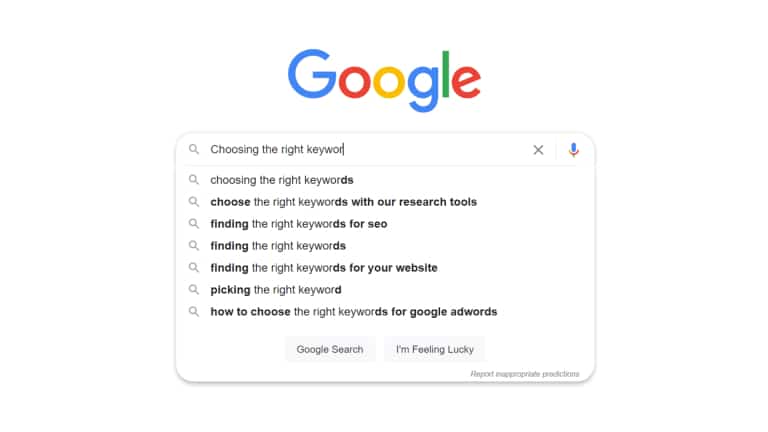
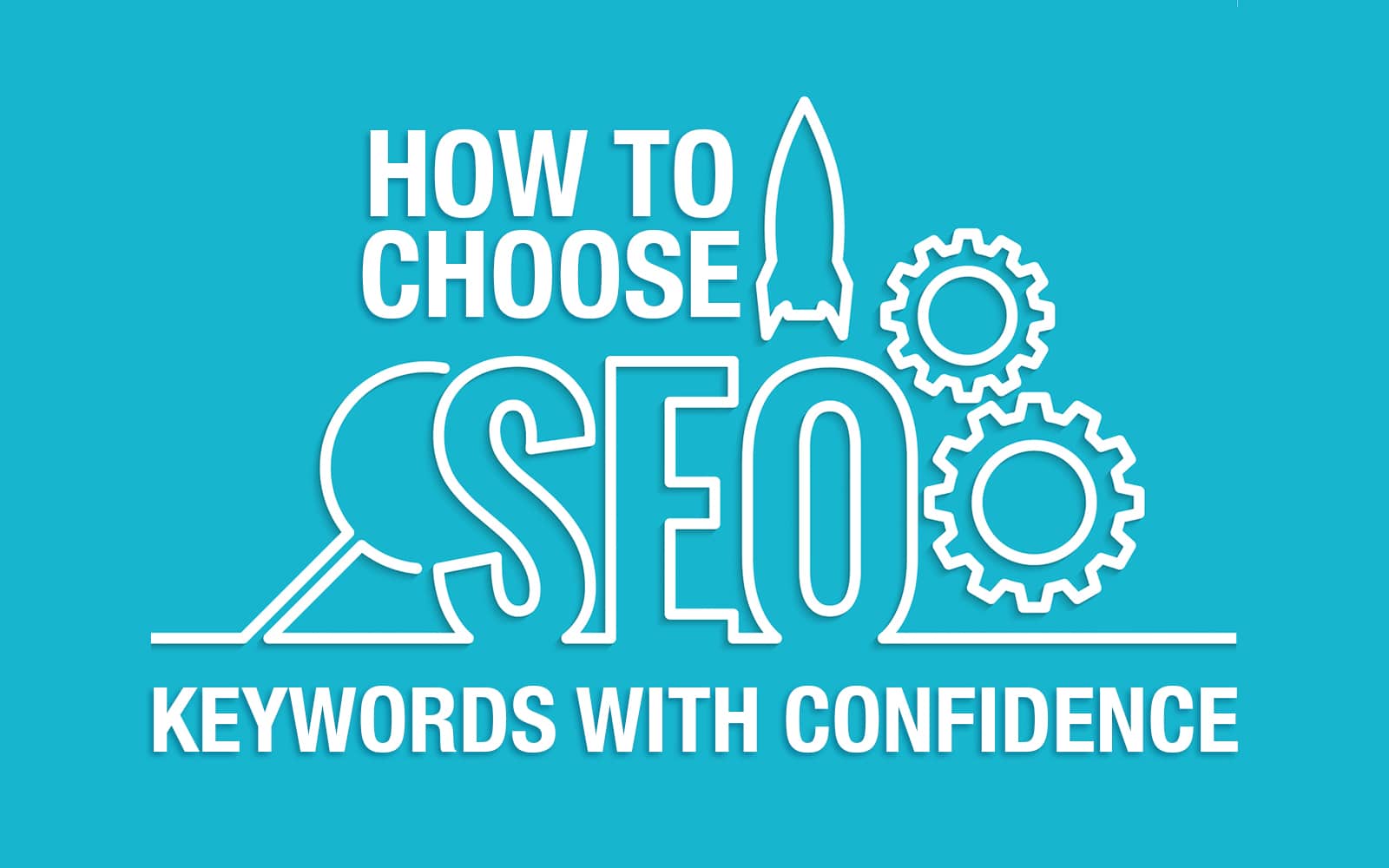
Focus on a Specific Topic
Search engines want to point people toward the most authoritative and correct results. So, if you’re an expert in a particular topic that you wish to explore, your website’s content should reflect that. Want to share your recipes with the world? Then food should be your site’s focus. Don’t blend pancake content with, say, metalworking. After all, it’s unlikely that your website is a massive multinational corporation or a large news organization that needs to be all things to all people.
Specificity is also key. If you’re a fisherman with an excellent perspective on fly fishing, as opposed to deep-sea angling, that’s what your website should be about. Lean into what you bring to the table; it’ll help your web presence.

Pick Relevant Keywords
A focused topic makes it simple to pick your site’s keywords. What are keywords? They’re the main words that lead people to your site. To properly use keywords, you take your website’s various elements—articles, images, videos, podcasts—and summarize them in SEO-friendly terms. You’ll also want keywords in your site’s URL, header tags, meta descriptions, and alt attributes. Simply access your website’s backend and place the terms in the keyword fields (if you’re using a website builder) or edit code (if you prefer entering a web hosting service’s backend and tinkering with HTML).
You should optimize keywords to match people’s searches. If your website sells hand-knitted scarves, then “scarf” and “knitting” should be your keywords. As you probably guessed, those same keywords will pull up other sites when someone performs a search. As a result, you should back up standard keywords with long-tail keywords, which are more specific searches.
Using our earlier example, a relevant, long-tail keyword would be “best hand-knitted Pokemon scarves.” That’s a particularly specific search that you can leverage to make your site stand out from the pack. Google has a tool, Keyword Planner, that helps you find potent keywords. Don’t get too obscure, though; you don’t want to use keywords that few people key into search engines.
Create Quality Content on a Consistent Basis
Content quality factors into SEO, too. For example, a blog about car engines needs to answer questions or illuminate niche topics. Rather than rambling on about engines, it’s best to go in-depth with information-packed articles, such as “The 5 Fundamentals of Transmission Repair” or “Things You Might Not Know About Carburetor Cleaning.”
Search engines prioritize websites with fresh, changing content. You don’t want to copy and paste content from another site. In fact, search engines will penalize your site for that. Focus on high-quality, original material.
In addition, you need to update your website consistently, whether that’s in the form of new articles, art, or products. Visitors want a reason to return to your site or share your content to Facebook, Twitter, Instagram, or other social media networks. Search engine spiders are eager to check out fresh content, too.
Establishing off-site links is necessary for building valuable authority. Search engines look for links to your site from other trusted sites, which include those aforementioned social media networks or other highly trafficked websites. If your site offers focused, quality content that results in a link from The New York Times, search engines will see your site as noteworthy and boost its rank.
You can’t make this happen artificially, though. Know your stuff, put that knowledge front and center, present it clearly, and update your website on a regular basis. Assuming it’s information that people crave, your site will eventually gain SEO traction.
Create Attractive Page Titles and Headlines
A page title and headline are similar, but distinct, ways to name the same website page. The former is a keyword-centric title designed to appease the search engine gods, while the latter is designed to please people who click through to the page.
For example, “2021 Honda Civic Review” is a tight, SEO-friendly page title that only appears in search results. After all, page titles are written for Bing and Google love. “10 Reasons Why the 2021 Civic Is Honda’s Best Car” is a great, on-page headline that encourages shares and returning readers. That’s good SEO, too. Of course, pages and headlines can have the same titles. Experiment to see which method works best.
As a precaution, make sure your page title and headline accurately describes what’s on the page. Don’t name a page “2021 Honda Civic Review” if the content doesn’t reflect that. That’s lying to the reader, which Google and other search engines frown upon. You’ll lose trust, authority, and SEO rank.
Optimize Your Images
On the web, images are the way we color inside the lines; bright, clean images make a website inviting. Beyond that, images highlight the product or services that you want to sell, and break up large text blocks to keep readers engaged. Images are important, so you should take time to optimize them.
The first step in optimizing your images for the web is to shrink them down to a manageable size. You should keep each image under a megabyte in size; even smaller if your have an image-heavy page. Resizing images to a maximum 1920 by 1080-pixel resolution and using the JPG or WEBP formats will help your pages quickly load. Search engines do not like slow-loading sites.
Make sure that your images have proper Alt attributes, too. Google, for example, can’t actually see the images that you upload to your site, but Alt attributes help the search giant categorize your photos. Alt attributes should be a description of the image, but not too long. Aim for around 125 characters, maximum.
Content management systems (think WordPress) typically have Alt fields, so you can easily type in an image keyword. If you prefer to edit HTML, the alt attributes work like this:
<img src=”cool_dude.jpg” alt=”Man typing an article” width=”1920″ height=”1080″>
Get into the habit of adding this clarifying text to all of your website images.
Reduce Your Website’s Load Time
According to Google’s market research, 53 percent of mobile audiences leave a site if it takes more than three seconds to load. Their time is valuable, so don’t encourage them to bounce with a slow-as-molasses website.
You can analyze your site’s speed with Google PageSpeed Insights, Google’s Test My Site, or Pingdom. These tools offer detailed information on how you can best improve your website’s load time. This includes replacing images or scripts that might be taking a while to load.
If you’re using WordPress, you’ll want to remove any plug-ins that aren’t critical to your site. You should also check out WP-Rocket, a WordPress plug-in that caches pages for faster load times.
Write Information-Packed Meta Descriptions
A meta description, also known as a snippet, is a small paragraph within each of your page’s HTML code. Meta descriptions appear in search engine results beneath page titles, and explain a page’s purpose in a more in-depth fashion. It’s here that you can write longer descriptions (approximately 150 characters!) that wouldn’t fit in page titles. Warning: don’t throw all your keywords in there. That’s keyword stuffing, and search engines frown on that. Instead, write your meta description in simple language.
If you’re comfortable editing HTML, drop the meta description in each page’s “Head” section. Here’s an example.
<head>
<meta name=”description” content=”Free Web tutorials”>
<meta name=”keywords” content=”HTML, CSS, JavaScript”>
<meta name=”author” content=”John Doe”>
</head>
Note the meta tags for description and keywords. They are the primary areas where you should focus your SEO efforts.
Many content management systems let you edit the meta descriptions without digging into the HTML. If you’re using WordPress, there are a number of different plug-ins, such as All in One SEO Pack or Yoast SEO, that let you add meta descriptions without dealing with code.
Address Your URLs
Yes, you must apply SEO tactics to URLs, too. Search engines consider the keywords in your site’s URL just as much as they consider the keywords on a page.
Does your website use dynamic URLs, addresses that rely on numbered pages? If so, replace them with static URLs. Take this hypothetical blog post, for example: http://thebestsiteever.com/post/detail?id=27869. The number at the end of the URL represents that specific post, but it’s not at all descriptive.
To fix that, dip into your site’s backend and enable static URLs, so you can add important keywords to your site’s address. With static URLs, that same post about smart cars will appear as http://thebestsiteever.com/post/smart-cars. Search engines love this more informative URL structure. Remember, brevity is key, so don’t make the URL a keyword-packed sentence. Lastly, use hyphens to break up the words in the URL, instead of cramming them all together.
Master Internal Linking
Your site gains search-engine authority when other sites link to it, especially if those external pages are seen as trustworthy and popular. These are called backlinks, and the truth is that you don’t have much control over them. Put your best work forward, and hope they come your way.
On the other hand, you have full control over internal linking. You want to link related articles to drive visitors deeper into your site. Generally, you want to link to anchor text, the words that visitors click to move from one page to another. For example, if your site has a post about spark plugs, and you want to link to it from a post about engine maintenance, use the hypothetical “replace your spark plugs” anchor text for additional SEO juice.
Internal links should be natural and sparingly used. A paragraph that’s nothing but links isn’t very readable, so search engines will dismiss it. You should also make sure your links work. Broken links indicate that you’re ignoring proper site maintenance, so search engines will penalize your site. If you need help scanning your web site for broken links, visit Dead Link Checker.
These 10 SEO tips are just the tip of the search engine optimization iceberg, but they’re an excellent starting point. Ranking well in Bing, Google, and other search engines won’t happen overnight, so be patient as you apply these tips to your website. And return here often! We’ll update this page with more useful SEO tips on a regular basis.
For more on web hosting, check out How to Register a Domain Name for Your Website and The Best Courses for Learning How to Build Websites.
Achieved great score using your outstanding information
Noor-ul-Sabtain
As your budget progresses and evolves, continue referring to your SMART objectives. Stay focused and remember your goals – they will always inform what your next step will be!
SEO Services in Karachi – Blog Transform Ways Into a SEO

When my daughter turned two, the only people that showed up to eat birthday cake at the party were immediate family members – mom, dad and her big brother, Adam. Why? Because we didn’t send out invitations or put any effort into getting guests to show up.
While this may be perfectly fine for a family event or a toddler that doesn’t know the difference, who wants to put time and effort into a business blog if readers aren’t showing up? Over 80% of blogs stagnate with no traffic and few readers but, like Jillian’s birthday party, the problem often lies with how people are invited to participate.
Simply having one doesn’t make it generate results.
What are the most effective ways to get blog posts read?
- Sharing on social media
- Using an email list to distribute new posts
- Purchasing Google or Facebook advertising to drive awareness
- Search Engine Optimization (SEO)
Using ALL of these options is ideal, but if you can only chose one, then SEO gets my vote every time.
If you have a few hours to invest, here are 3 ways to transform your WordPress blog (or website) into a search-friendly traffic generator. All of them are free, other than the time you’ll invest.

1. Install a good SEO plug-in.
My favorite free SEO solution is WordPress SEO by Yoast, which makes it easy as red light, yellow light, green light. Pretty easy, right? Make sure to keep in mind that simply installing this plugin isn’t helpful in and of itself – but many bloggers stop at this first step. Its real power lies in understanding how to use it correctly and choosing the right keywords.
2. Do keyword research.
Head over to the Google Keyword Popularity Tool and invest some time in keyword research to better understand which keywords drive the most traffic. The trick with keywords is to never assume you know which ones are best; ALWAYS do research to ensure you are using popular keywords that best suit your product, service and/or blog topic.
If you use localized keywords for your SEO efforts – such as “az life coach” or “life coach in phoenix” instead of just “life coach,” you are much more likely to rank well – with the added benefit of landing more targeted readers. This is especially important if you are a local business.
I recommend creating a free account on AdWords (or log-in to your account, if you already have one), then search for the keywords you think are most likely to be searched. Adding your city and state will give you local search results to review, plus some great ideas for blog posts that fit what people are looking for. Using the keywords you entered, Google will bring up a list of other relevant keywords that were actually searched for in the previous month. I prefer to export them to Excel, get rid of unnecessary columns, rank them from most to least popular, then save the document for easy reference later.
3. Choose one keyword, then include it in your post permalink, title, and first sentence.
Make sure you have WordPress set to name the page URL as your post name (which can be changed in settings> permalinks> post name), this will automatically put the keyword in your post URL – also called the permalink. This is an essential component for SEO success.
Then, simply use the default text for the “SEO title” field at the bottom of the page (which is your title plus the name of your blog), and copy the first sentence of the post into the “Meta Description” field. If good writing dictates NOT using the keyword in the first sentence (which happens often but is not optimal), then paste in the first blog sentence that DOES have the keyword in it, or write one that uses the keyword and describes the post in a way that people will want to read it. Put the keyword in the “Meta Keywords” field, then you are all done.




